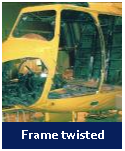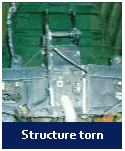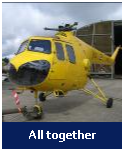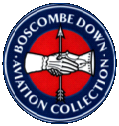

|
The Sycamore has the distinction of being the first British-designed helicopter to fly. During the 1950s Sycamore crews helped pioneer many of the helicopter techniques commonly used today in air-sea rescue and troop transport work. By 1944 the Airborne Forces Experimental Establishment had decided that gliders were most suited to the transportation of large numbers of troops. They therefore released the group of designers which had been working on helicopter projects to the Bristol Aeroplane Company, allowing Bristol to set up a Helicopter Department. By 1947, the company had built the prototype of the Sycamore, which made its first test flight in July of that year. Sycamore XJ380 was delivered to the Royal Air Force on 22nd October 1956, and served with 275/228 Squadron, Handling Squadron, Ministry of Aviation, and the Central Flying School. On withdrawal from service, it went to the Catterick Fire School on 6th March 1968, and was allocated the maintenance number 8628M. In the early 1980's XJ380 was moved to Finningley for display outside the SAR Wing headquarters. Here it was restored and painted in yellow RAF Rescue colours, with 202 Squadron markings. She was put up for tender in 1988, and went to a private collector at Drighlington, South Yorkshire. In 1991, XJ380 was moved to New Byth, in Grampian and in 1994, the Sycamore moved again, this time to the Montrose Air Station Museum. At some time during this period XJ380 was severely damaged when the nose gear was forced upwards and to port, resulting in the cabin floor being both bent and bowed upwards. After several years in a dismantled state, XJ380 left Montrose in February 2007 for Lincolnshire, en-route to Boscombe Down Aviation Collection. She did not arrive until June 2007 and restoration started in January 2008. |






|
BDAC—Old Sarum Airfield Museum |
